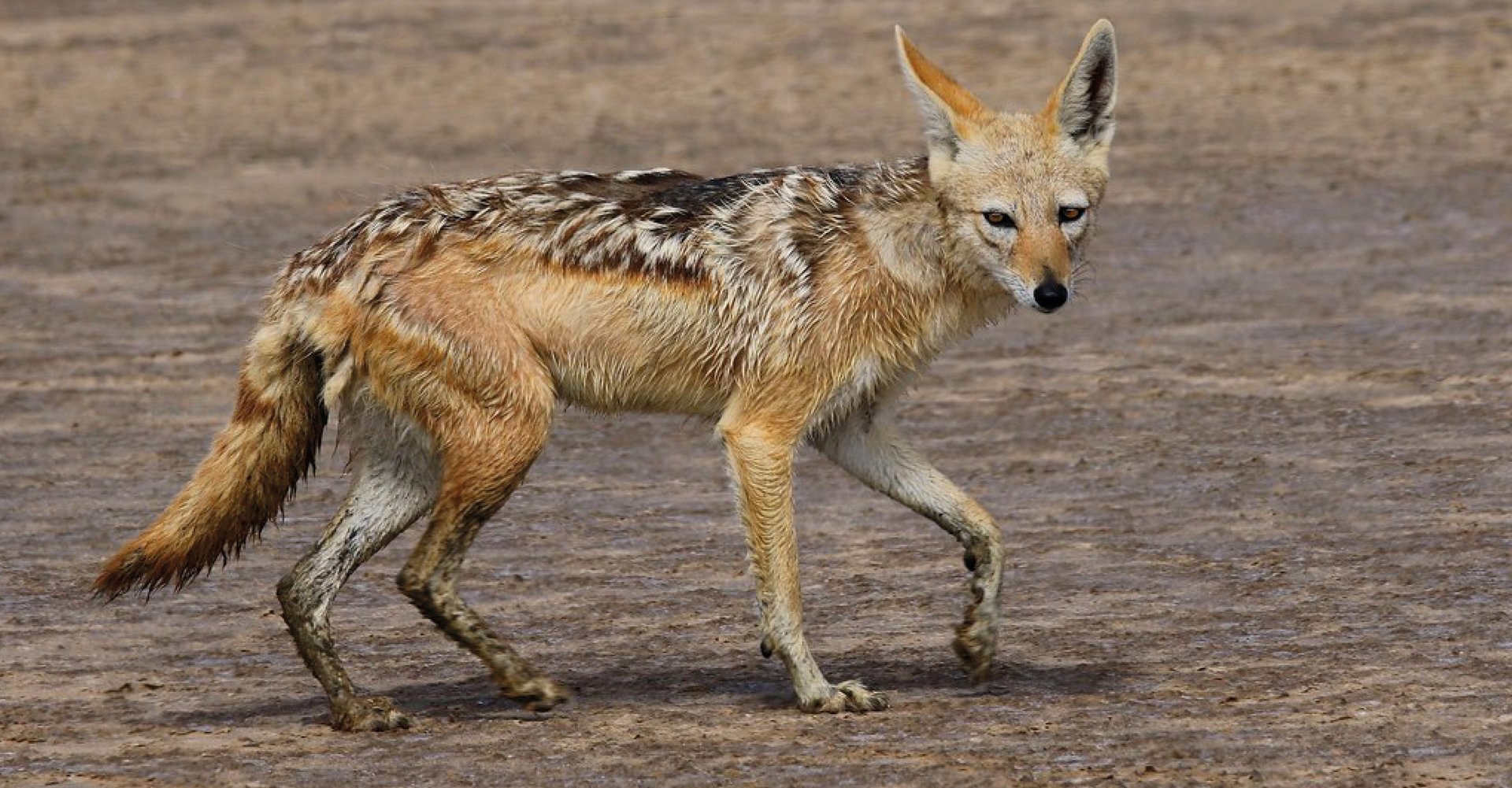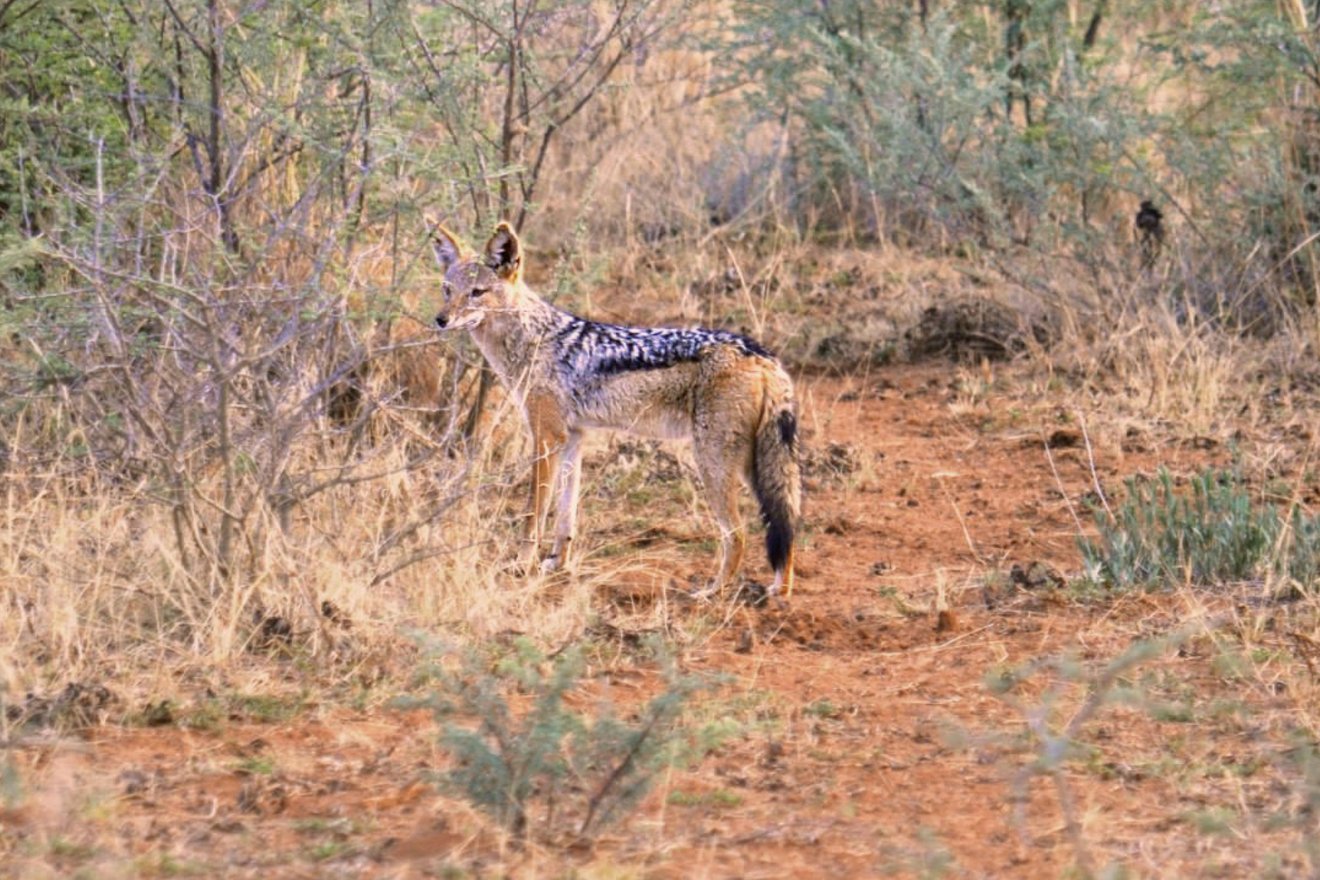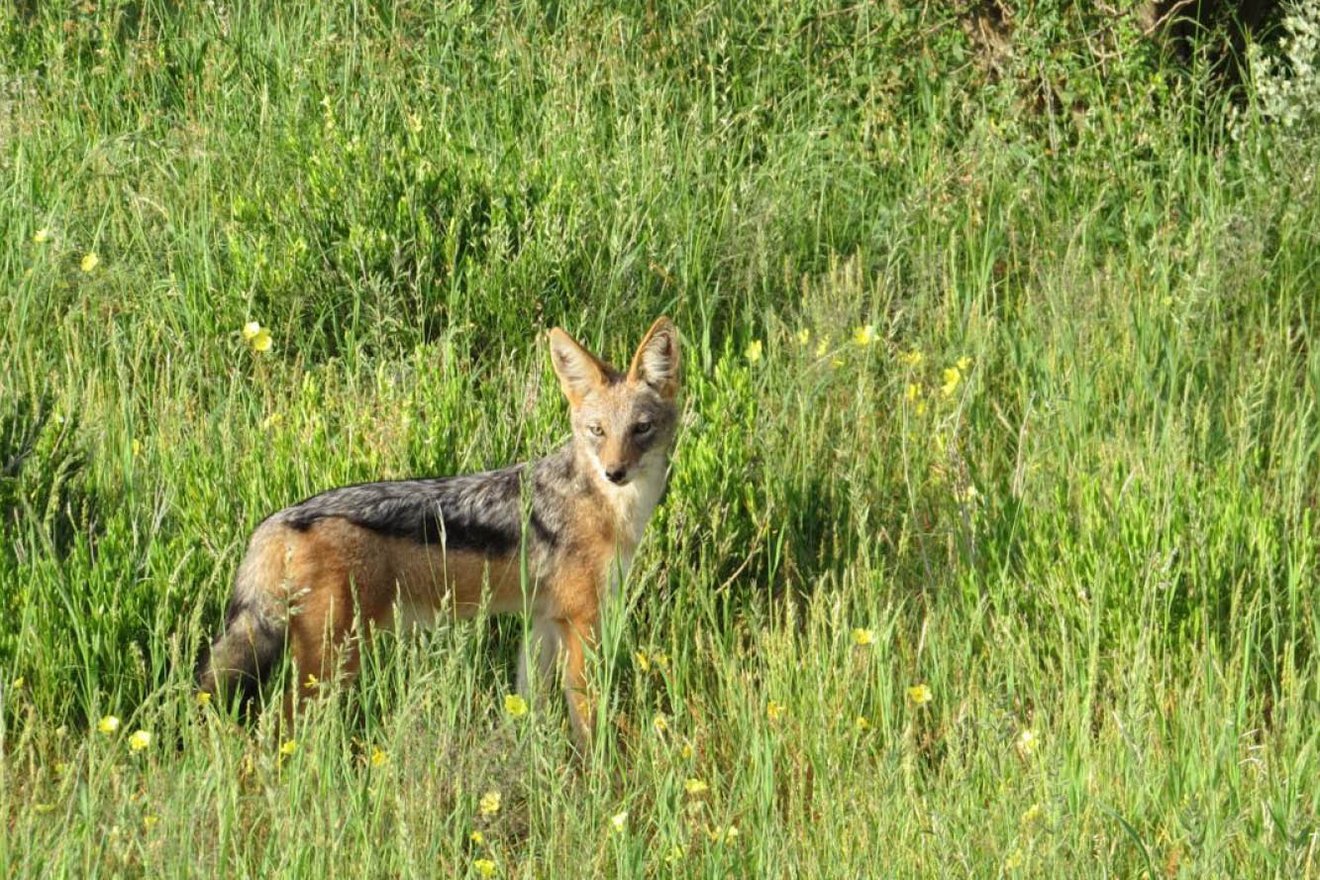Clever, adaptable, and unassuming, jackals embody the spirit of wild beauty in Namibia, teaching us the art of resilience and adaptability.
These medium-sized wild canines, resembling foxes, are exceptionally adaptable, both in terms of their ability to thrive in various habitats and their dietary preferences. They often display remarkable ingenuity in problem-solving. Jackals are widely distributed, inhabiting savannas, grasslands, coastal regions, forests, and even deserts. They are the most adaptable and widespread carnivores in Africa.
Jackals
The Savanna's Cunning Fox
Guide knowledge: Black-backed Jackal
Depending on their distribution, jackals exhibit specific behavioral patterns and dietary preferences. In some regions, they follow lion prides in search of leftovers. They are adept at waiting for antelope births to prey on newborns and afterbirths. Often, jackals become synanthropic, seeking human settlements to scavenge through garbage bins or prey on lambs and young goats.
Jackals at KAMBAKU
KAMBAKU is home to many jackals. Primarily nocturnal, they are the most common scavengers in the Kambaku Wildlife Reserve. On many evenings, the echoing howls of these communicative creatures can be heard across KAMBAKU.




